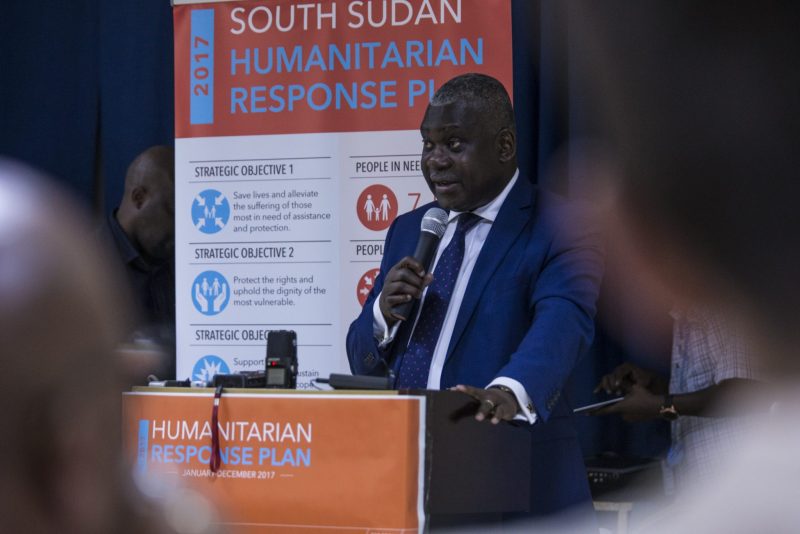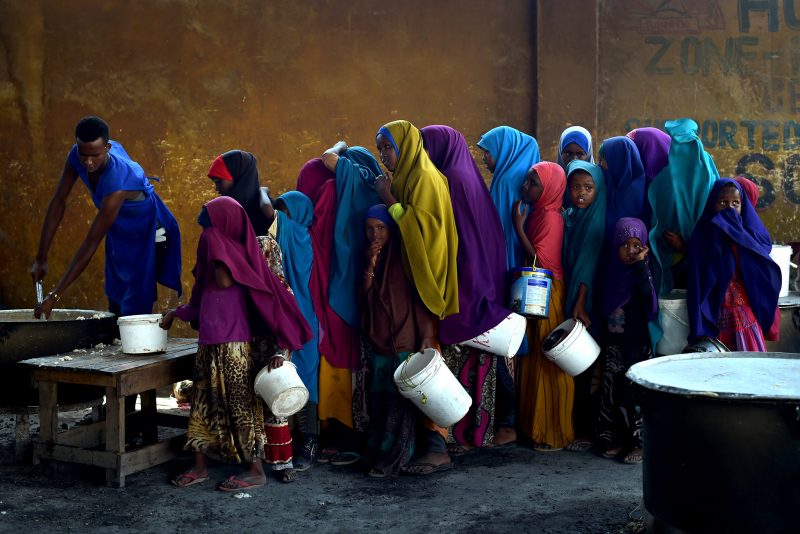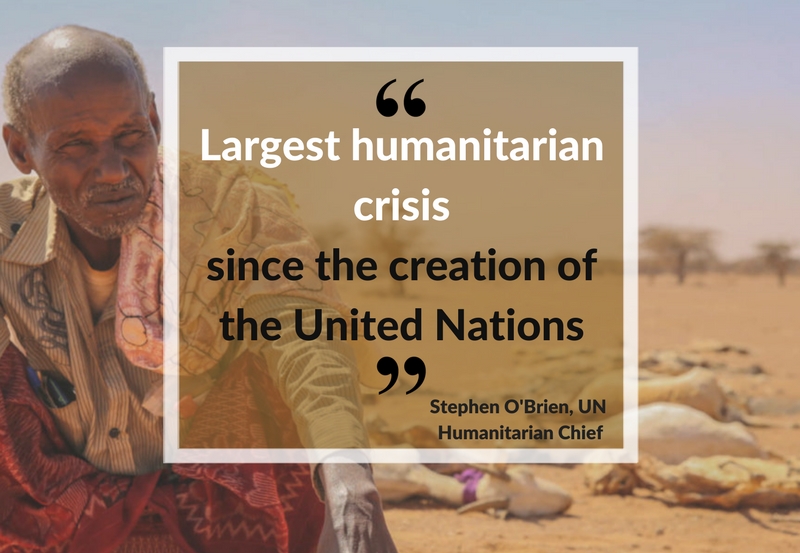The looming famine as a result of severe drought is affecting several African countries, including Somalia, South Sudan, Yemen, and Nigeria. More than 20 million people are at risk of starvation, according to U.N. humanitarian chief Stephen O’ Brien. He calls it the largest humanitarian crisis since the U.N. was founded in 1945. The last time such a disastrous famine occurred was in Somalia in 2011, where more than 250,000 people died. However, if the situation in these four countries continues to escalate, predictions for the amount of casualties get much worse. Nearly 1.4 million children are expected to die from malnutrition. In Somalia alone, at least 6.2 million people are affected by the drought (half of the country’s population) and 3 million people are at risk of starvation. Parts of South Sudan already face famine, and the U.N. claims around 3.4 million have also been displaced as a result of fighting within the country.
“Millions of people are denied the very basics to survive.”
Red Cross director of operations Dominik Stillhart
Cycles of drought mean famines have been ongoing in areas of Africa for years, and while hunger is a daily reality for many people, some years are worse than others. Wells dry up in the heat, and without water, livestock die and crops cannot be grown. “Millions of people are denied the very basics to survive,” Red Cross director of operations Dominik Stillhart said. According to Al Jazeera, “the medical charity needs 300 million dollars to bring emergency assistance,” and this is for 5 million of the 20 million people affected.
“We need 4.4 billion dollars by July [to] avert a catastrophe,” O’Brien added.

Many have responded to this crisis by raising a general awareness campaign, as well as donating money for relief funds and aid. Internet star Jerome Jarre brought more attention to the situation by creating the hashtag #TurkishAirlinesHelpSomalia, and after support from other figures such as quarterback Colin Kaepernick and actor Ben Stiller, the airline responded to the social media campaign for relief. Thanks to donors, the goal of one million dollars in aid was surpassed in just one day. People donated approximately 1.4 million dollars, and nearly 60 tons of food and aid were delivered to Somalia.
Although the overwhelming response to this crisis is a good sign, future aid must be given to help both the issue at hand but also must consider the long term effect. In other words, humanitarian groups and relief efforts must plan better than ever before in order to contain the problem and prevent such a large scale famine from happening again. As Stillhart stated, relief efforts must also address “the root causes of the crisis” aside from the immediate crisis.
“I feel like sending food and water is a short term solution to a long time, multifaceted problem,” senior Angela Brown said. “One of the most sustainable solutions to famine everywhere, not just in Africa, is to genetically modify seeds to grow in this environment. They can start with simple crops and eventually graduate to more complicated ones. If they can make cotton candy flavored grapes and apples that don’t brown, I don’t see why they can’t modify seeds to grow in the world’s most destitute places.”

The countries “are in need of both an organized, short-term as well as a long-term response to ensure that this crisis is contained, and does not happen in the future,” according to associate professor at Qatar University’s International Affairs Department Afyare Abdi Elmi. “The Turkish aid model opened new doors for the Somali people. Western and Gulf donors should follow suit and invest in the long-term projects that can help empower the state institutions, prevent another humanitarian catastrophe, and contribute to the economic growth of the country,” Elmi added.








Kekistani Migrant • Apr 10, 2017 at 7:47 am
What of my countrymen in Kekistan? What of the thousands of innocents affected by a useless war in 2016 that was paid with the blood of many young men? When will we, the citizens of Kekistan, get the recognition we deserve?#KekLivesMatter #FreeKekistan
humza • Apr 3, 2017 at 9:24 am
Wow I hope that my fellow countrymen can pull through. Stay Strong.
Cian Mattern • Apr 21, 2017 at 7:47 am
Yeah. I hope yemen gets better